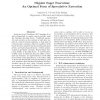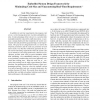171 search results - page 2 / 35 » Minimal TCB Code Execution |
PDCN
2004
13 years 6 months ago
2004
Setuid programs are often exploited by malicious attackers to obtain unauthorized access to local systems. Setuid programs, especially owned by the root user, are granted root pri...
CCS
2008
ACM
13 years 7 months ago
2008
ACM
One of the key issues with the practical applicability of Proof-Carrying Code (PCC) and its related methods is the difficulty in communicating the proofs which are inherently larg...
MICRO
1995
IEEE
13 years 8 months ago
1995
IEEE
Instruction Level Parallelism (ILP) speedups of an order-of-magnitude or greater may be possible using the techniques described herein. Traditional speculative code execution is t...
RTSS
2002
IEEE
13 years 9 months ago
2002
IEEE
In addition to real-time requirements, the program code size is a critical design factor for real-time embedded systems. To take advantage of the code size vs. execution time trad...
ISCA
2011
IEEE
12 years 8 months ago
2011
IEEE
Blocked-execution multiprocessor architectures continuously run atomic blocks of instructions — also called Chunks. Such architectures can boost both performance and software pr...



